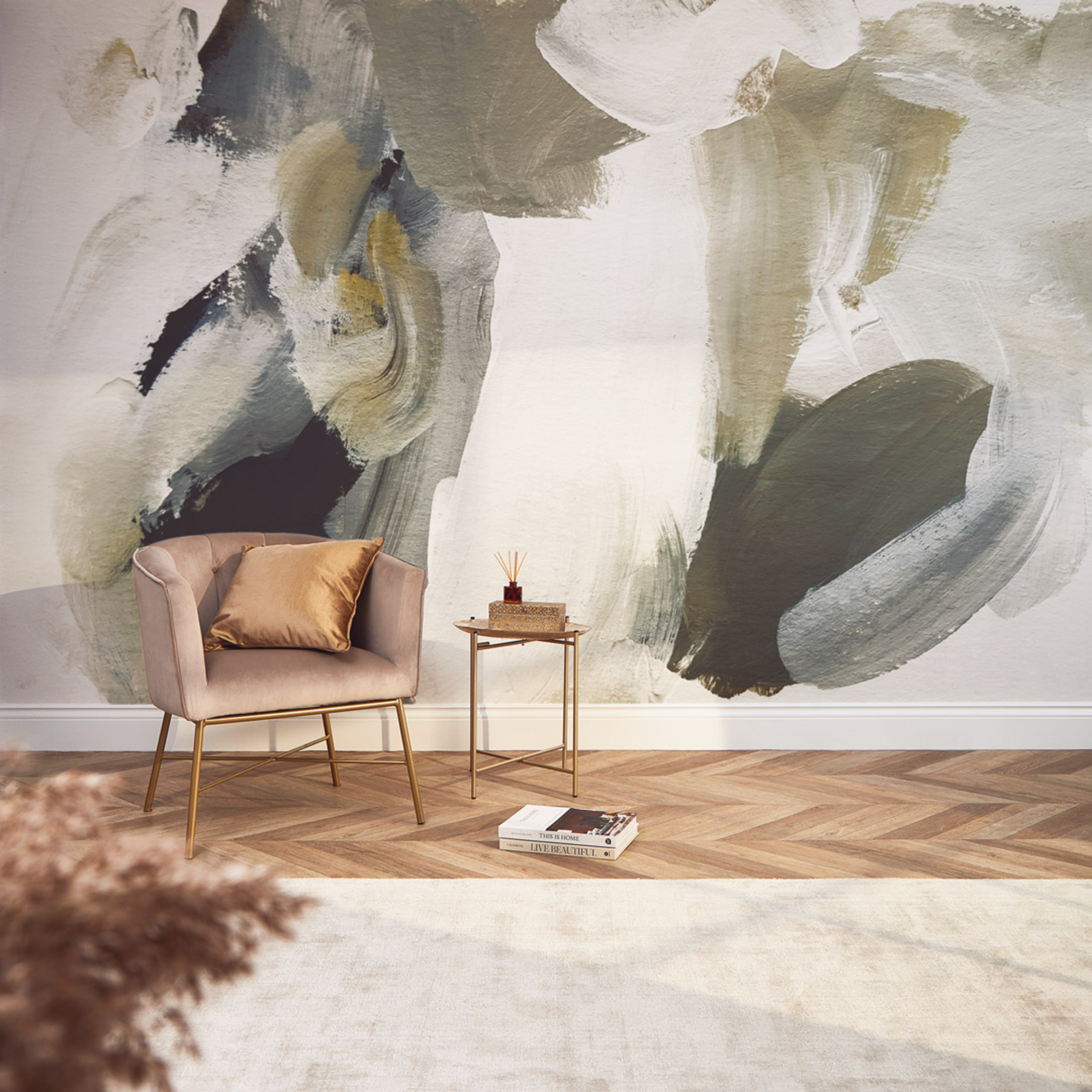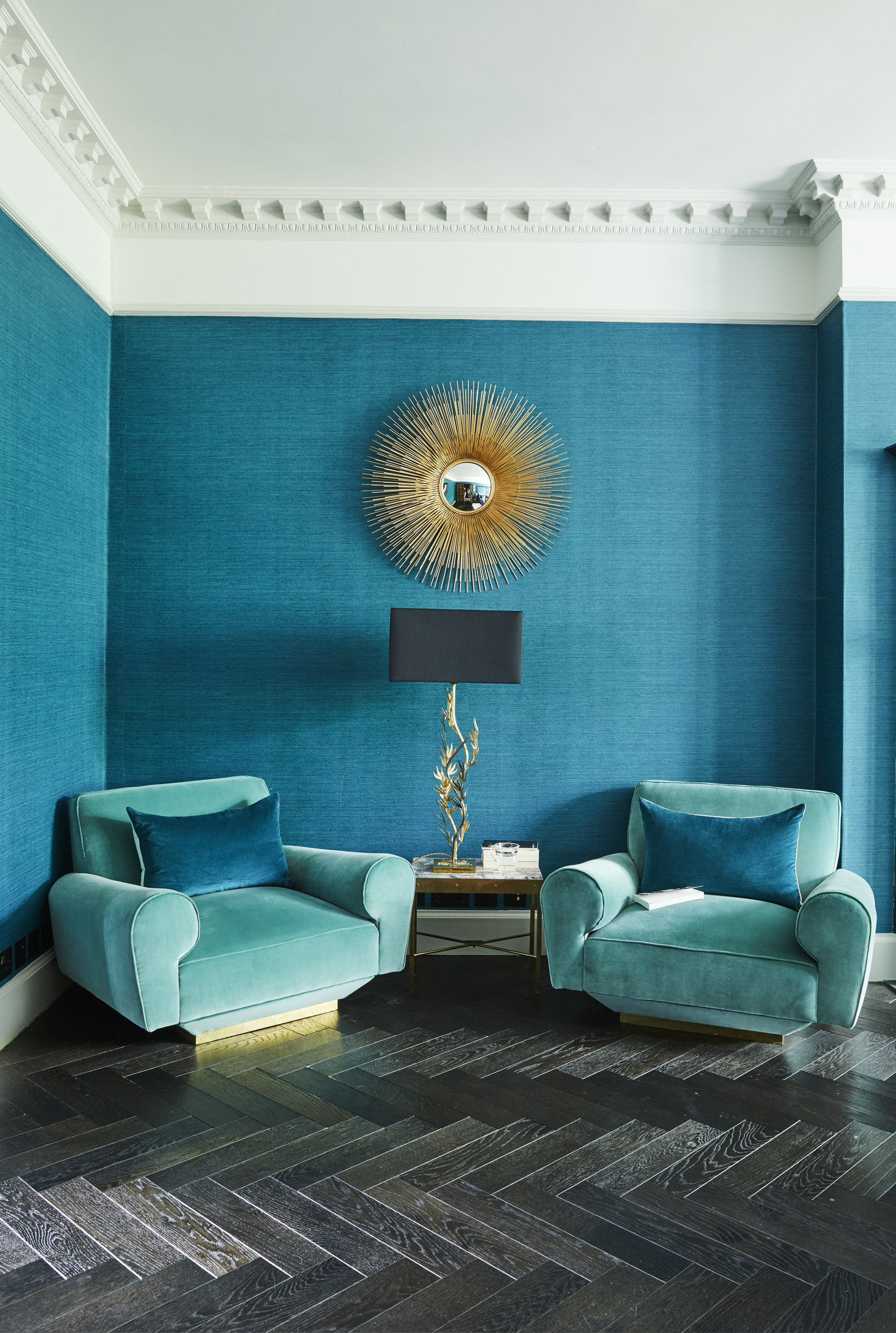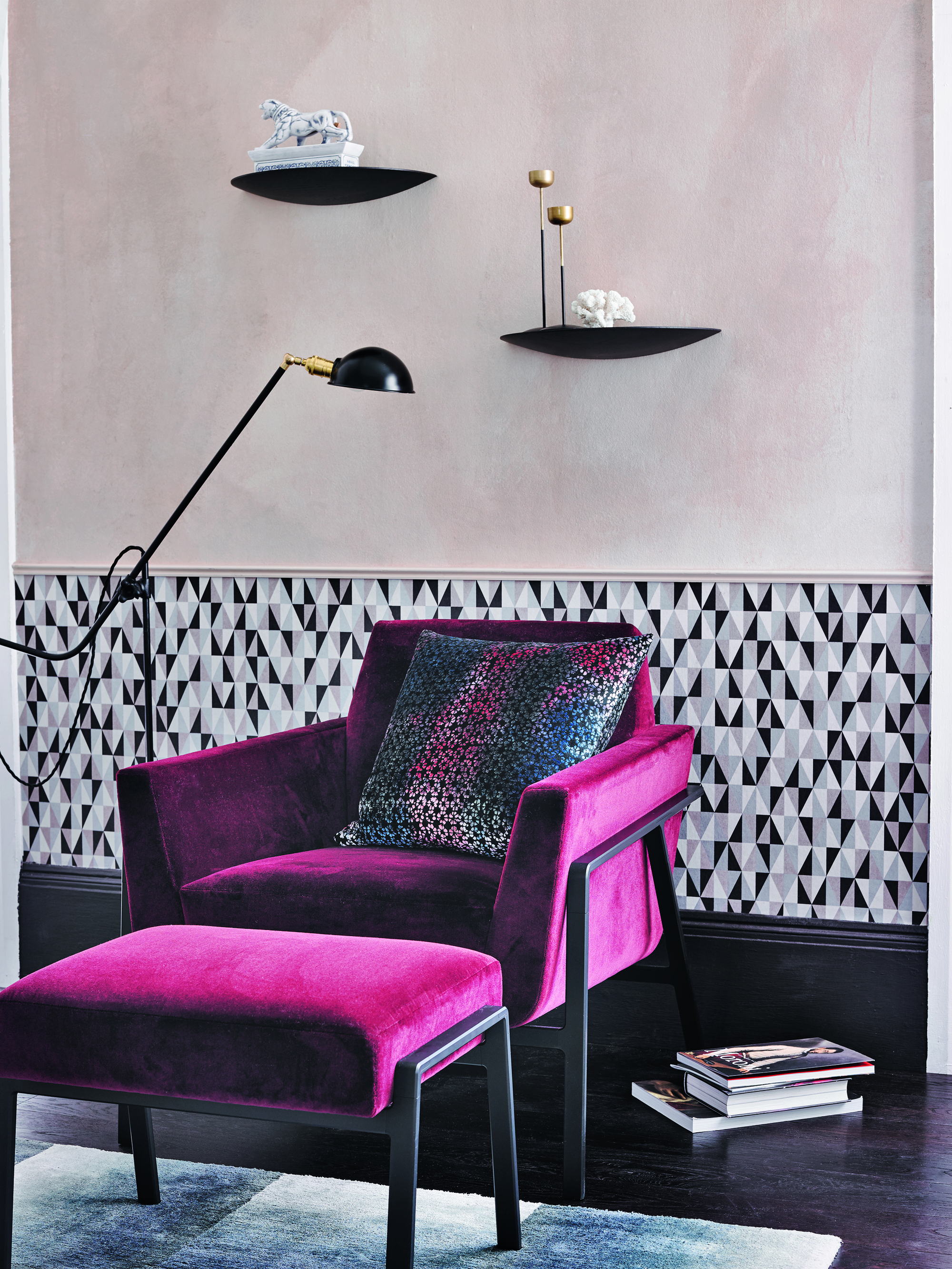Can you paint over wallpaper? Here's what the experts have to say about this DIY decorating cheat
Sometimes painting over your wallpaper seems like the easiest option. These decorating experts are on hand to explain when and how to do so


In some cases, the easiest solution to covering wallpaper you're no longer happy with in your home is to paint over it. The thought of stripping all the walls of your room and the hours of sanding that inevitably follow might be too much to bear. Instead, masking them with paint might seem alluring.
But, the answer to whether you can safely paint over wallpaper isn't clear cut. In short, yes, it's possible - however, there are some important things you should know before you do so.
When painting over wallpaper, your finish isn't going to be as smooth and clean as it would be on a sanded wall, and it's also unlikely to last as long either. And yet, in older houses where wallpaper has been used for decades to mask imperfect walls, putting your paint straight over the wallpaper is likely to be far easier than removing it first.
If you're wondering how to paint a room considering whether it's worth stripping your wallpaper before you paint, we've asked some experts for a better insight into when it's best to simply paint over it and tips on how it's done.

Lilith is an expert at following news and trends across the world of interior design. She's committed to helping readers make the best choices in their homes through sharing practical tips and innovative solutions for all their DIY needs. For this piece she asked painters and decorators for their advice on whether you can paint over wallpaper.
Can you paint over wallpaper, and if so, how?

In short, you can safely paint over wallpaper, but most decorators would advise against it as it won't result in the same seamless finish as when you paint directly onto a wall.
'It's usually better to remove wallpaper before painting, but occasionally the expense of doing so or the state of the block behind it may restrict your options,' explains Robin Antill, Director of Leisure Buildings.
If you do decide to paint over your wallpaper. Robin has a few tips to ensure a smoother finish.
First, examine the seams. 'Make sure the edges are tightly bonded to the wall,' he says. 'Use wallpaper adhesive to fix any lifting by securing it. If you don't, paint and primer may leak under and deteriorate the margins.'
Next, he advises applying an oil-based primer. 'If you use latex or water-based primer, you'll re-activate the chemical glue in your wallpaper paste, causing it to come away,' he explains. When it comes to painting, wait at least a day for the primer to cure completely and avoid paint finishes with a high shine like satin. 'These may highlight any flaws or roughness in the wallpaper,' Robin says.
In some cases, you might need to score the wallpaper first so the primer and paint can adhere. 'To do this, use a scoring tool or utility knife to lightly score the surface of the wallpaper,' says Steven Hill, Founder of DIY Gazette. 'Be sure to score evenly across the entire surface.'
What is the best primer to use for painting over wallpaper?
Normally, when it comes to how to paint a room, you can use two in one primer and paints on your walls. However, since wallpaper can be textured or sometimes has a nonporous layer on top, it's important to use a heavy duty primer before painting over it.
As mentioned, water or latex primers can cause your wallpaper to peel, so an oil-based primer is best. Some brands now offer a special wallpaper cover up (we love this one from Zinsser) which are especially good for smoothing over textured wallpapers such as grasscloth.
A primer or wallpaper coverup will protective the surface of your walls while also increasing the adhesion of the paint so it has a cleaner finish.
Is it better to paint over wallpaper or remove it?

If you're still pondering whether it's worth removing your wallpaper before painting, it's best to apply your common sense. Are you just feeling extra lazy and want to save the hassle of stripping the walls? If the answer is yes, it's definitely worth removing it.
However, perhaps you've moved into an old house with textured wallpaper that looks as though it's been there as long as the house itself. You might be concerned of the risks involved with tearing down the wallpaper, especially if you're worried about damaging the underlying drywall, a common wallpaper mistake to avoid. In this case, painting over wallpaper could save you costly repairs further down the line.
You should also bear in mind the quality of the wallpaper. 'If the wallpaper is in good condition and you're confident it will provide a good surface for the paint to adhere to, then painting over it is an option,' explains Steven. 'But if the wallpaper is in poor condition or you're not confident it will provide a good surface for the paint to adhere to, then removing it is the best bet. Hire a professional if your need to.'
Be The First To Know
The Livingetc newsletters are your inside source for what’s shaping interiors now - and what’s next. Discover trend forecasts, smart style ideas, and curated shopping inspiration that brings design to life. Subscribe today and stay ahead of the curve.

Lilith Hudson is a freelance writer and regular contributor to Livingetc. She holds an MA in Magazine Journalism from City, University of London, and has written for various titles including Homes & Gardens, House Beautiful, Advnture, the Saturday Times Magazine, Evening Standard, DJ Mag, Metro, and The Simple Things Magazine.
Prior to going freelance, Lilith was the News and Trends Editor at Livingetc. It was a role that helped her develop a keen eye for spotting all the latest micro-trends, interior hacks, and viral decor must-haves you need in your home. With a constant ear to the ground on the design scene, she's ahead of the curve when it comes to the latest color that's sweeping interiors or the hot new style to decorate our homes.
-
 The 'New British' Style? This Victorian London Home Embraces Its Owners' Global Background
The 'New British' Style? This Victorian London Home Embraces Its Owners' Global BackgroundWarm timber details, confident color pops, and an uninterrupted connection to the garden are the hallmarks of this relaxed yet design-forward family home
By Emma J Page
-
 Muji Living Room Ideas — 5 Ways to Harness The Calming Qualities of This Japanese Design Style
Muji Living Room Ideas — 5 Ways to Harness The Calming Qualities of This Japanese Design StyleInspired by Japanese "zen" principles, Muji living rooms are all about cultivating a calming, tranquil space that nourishes the soul
By Lilith Hudson